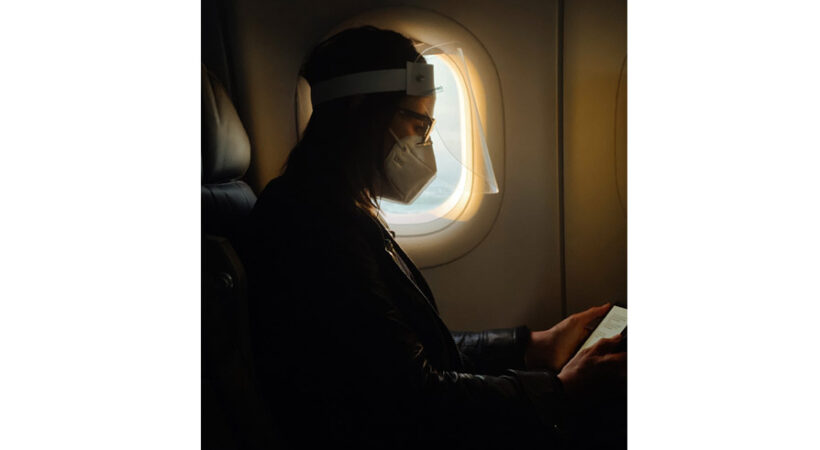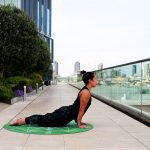Flying during pandemic: Is it safe?

Photo by Camila Perez
Bloomberg reports quoting review of recent cases and interviews with academics and disease specialists, some recent cases have documented transmission on flights even when passengers wore masks and sat far apart.
According to Bloomberg, the claim that the risk of being infected with the novel coronavirus on planes — which have highly effective filters that remove virus from the air and where mask usage is required — is probably fairly low is not conclusive.
U.S. airlines, hit with an unprecedented drop in demand since the virus began spreading widely in March, are enjoying their strongest week since then. Even as health officials warn against travel during the Thanksgiving holiday because of a surge in Covid-19 cases, more than 4 million people traversed airports between Friday and Monday, the report said.
“I definitely can say it’s premature to say that air travel is very safe,” said Qingyan Chen, an engineering professor at Purdue University in Indiana who’s written extensively on disease transmission on planes.
Airline officials, responding to the historic drop in passengers, have repeatedly defended the protections against infection on flights.
“Flying is safe,” Nicholas Calio, president of Airlines for America, a trade group for large carriers, said at a Nov. 12 briefing. “I will state that categorically.”
A4A declined to add additional comments. It has highlighted the efforts to force passengers to wear masks and to remain apart during boarding and exiting, and to disinfect aircraft. Montreal-based IATA defended its use of Freedman’s data on confirmed in-flight transmissions, saying it never characterized the results as definitive.
A4A has frequently cited a study by the Harvard T.H. Chan School of Public Health, which was funded by the trade group and other aviation industry sources, that concluded the risk of transmission on an airliner was “very low.” But authors cautioned that their projections depended on adherence to mask usage and they also urged airlines to improve ventilation while planes are parked at the gate.
Another study airlines point to was conducted by the Defense Department with the assistance of United Airlines Holdings Inc. and Boeing Co. It attempted to measure how aerosol virus particles were exhaled by a simulated masked passenger, the report says.
United said in promotional materials released October 15 the study “determined the risk is almost non-existent.”
However, after news coverage of the study, the authors added a revision, saying they were “concerned about the potential misinterpretation of the findings.” They also acknowledged they based their results on a person exhaling relatively few virus particles, an amount well below levels documented in some cases.
The airplane filters and mask usage “significantly reduces” exposure to infectious aerosols, they wrote. “However, the current established scientific understanding of SARS-CoV-2 transmission dynamics is not sufficient to calculate definitive SARS-CoV-2 transmission risk from these measurements of aerosol transport.”
United spokeswoman Leslie Scott responded in an email that “Throughout the pandemic, our top priority has been the health and safety of our customers and crew.”
“It’s why we supported military officials, medical experts and aviation engineers in their work demonstrating that aircraft cabins are among the safest of public indoor environments thanks to advanced air filtration systems, required mask-wearing and diligent cleaning protocols,” she added.
Overall, there are few confirmed reports of infections linked to flights. However, because of limited contact tracing in the U.S. and the difficulty of finding transmission cases, it’s hard to say for sure what that means, researchers said.
“I haven’t seen any studies come out and say it’s highly risky,” said Byron Jones, an engineering professor at Kansas State University who has studied airliner cabin-air safety. “But I haven’t seen the study that says it’s definitively safe either.”
Overseas reports
The U.S. Centers for Disease Control summarizes the risks from air travel this way on its website: “Most viruses and other germs do not spread easily on flights because of how air circulates and is filtered on airplanes. However, keeping your distance is difficult on crowded flights, and sitting within six feet of others, sometimes for hours, may increase your risk of getting Covid-19.”
While some studies have shown cases in which no one on a flight became infected in spite of the presence of contagious passengers, other data have documented in-flight transmissions.
Purdue’s Chen said he’s been following news reports in China of possible infection between passengers on a Nov. 9 Air China flight from Los Angeles to Tianjin.
Ten people who weren’t connected to each other and resided in different parts of the U.S. tested positive for Covid-19 after arrival. All the passengers had tested negative for the disease before the flight, suggesting at least some of the transmission occurred on the plane, he said.
Such incidents are confounding because they seem to contradict Chen’s own earlier research showing mask usage can dramatically lower risks of infection, he said.
“That’s why I’m having doubts about what’s going on in airplanes,” he said.
Government researchers in Ireland documented as many as 13 cases linked to a single flight last summer, according to a paper published in October. The infections in five of the cases were genetically linked, “strongly suggesting a single point source of infection,” the authors said.
The widebody jet was largely empty, people were spaced out on the plane and almost everyone whose activity could be documented said they wore masks. Nevertheless, the authors estimated that 10-18% of passengers became infected.
“It is interesting that four of the flight cases were not seated next to any other positive case, had no contact in the transit lounge, wore face masks in-flight and would not be deemed close contacts under current guidance from the European Centre for Disease Prevention and Control,” the authors said.















